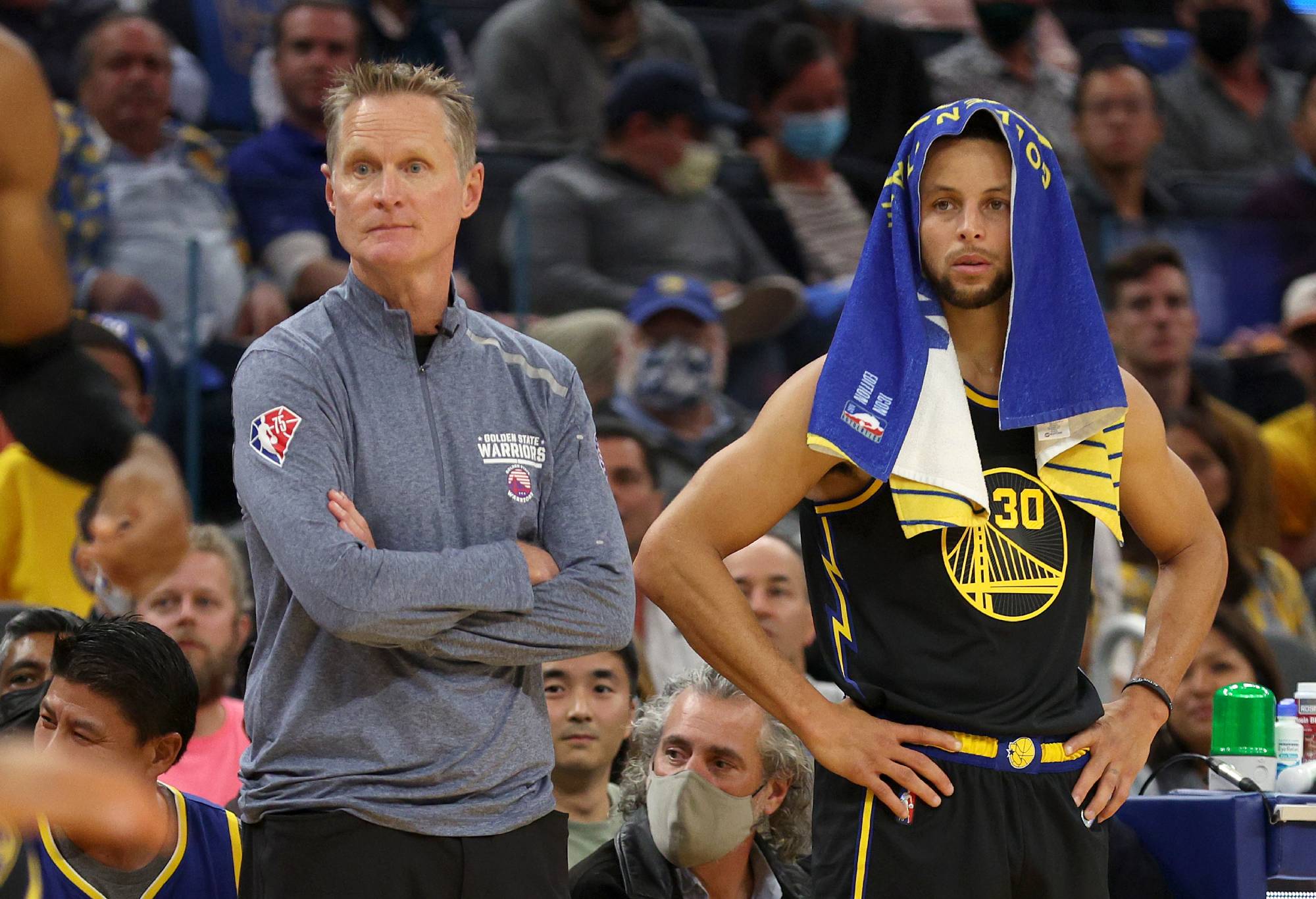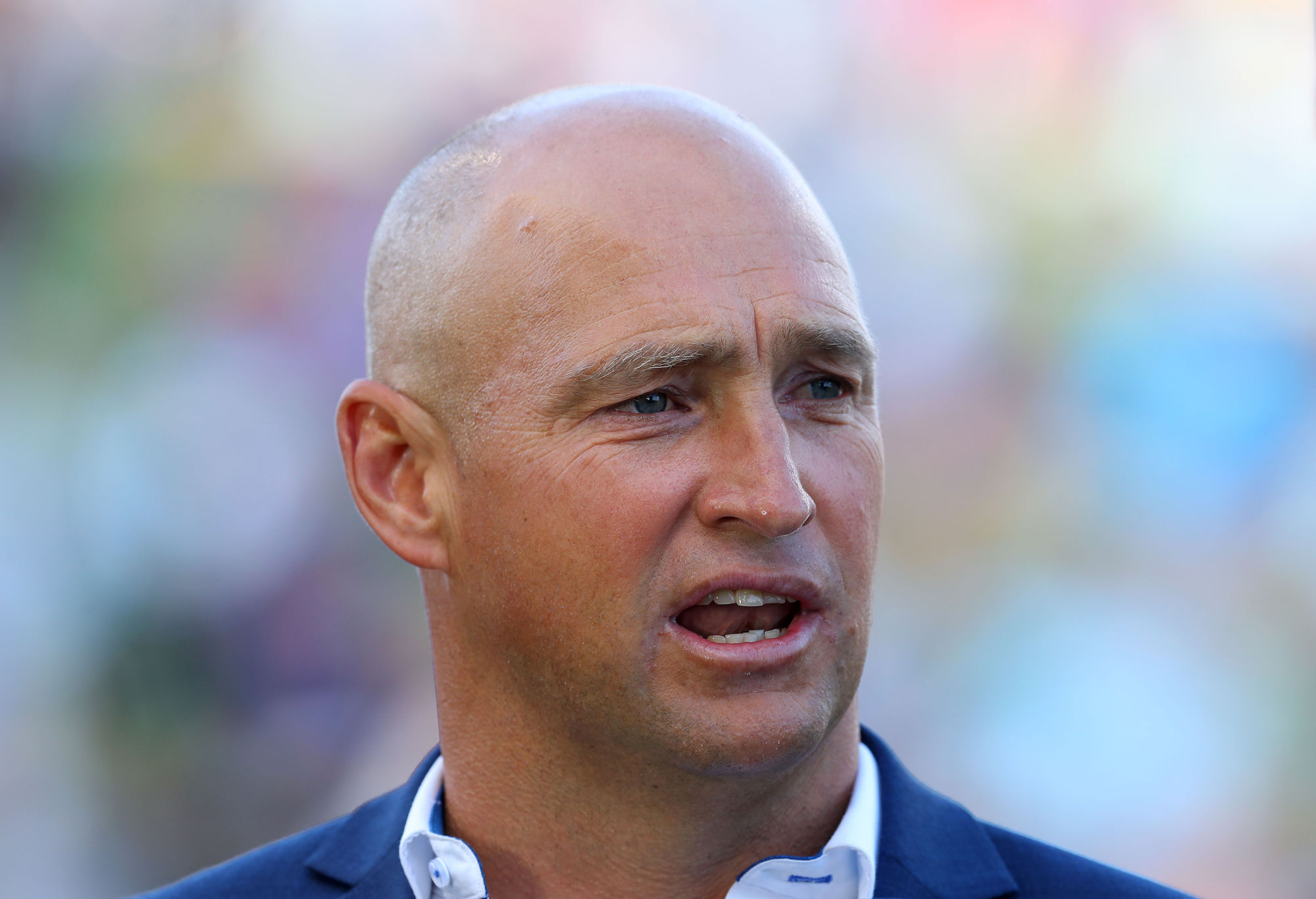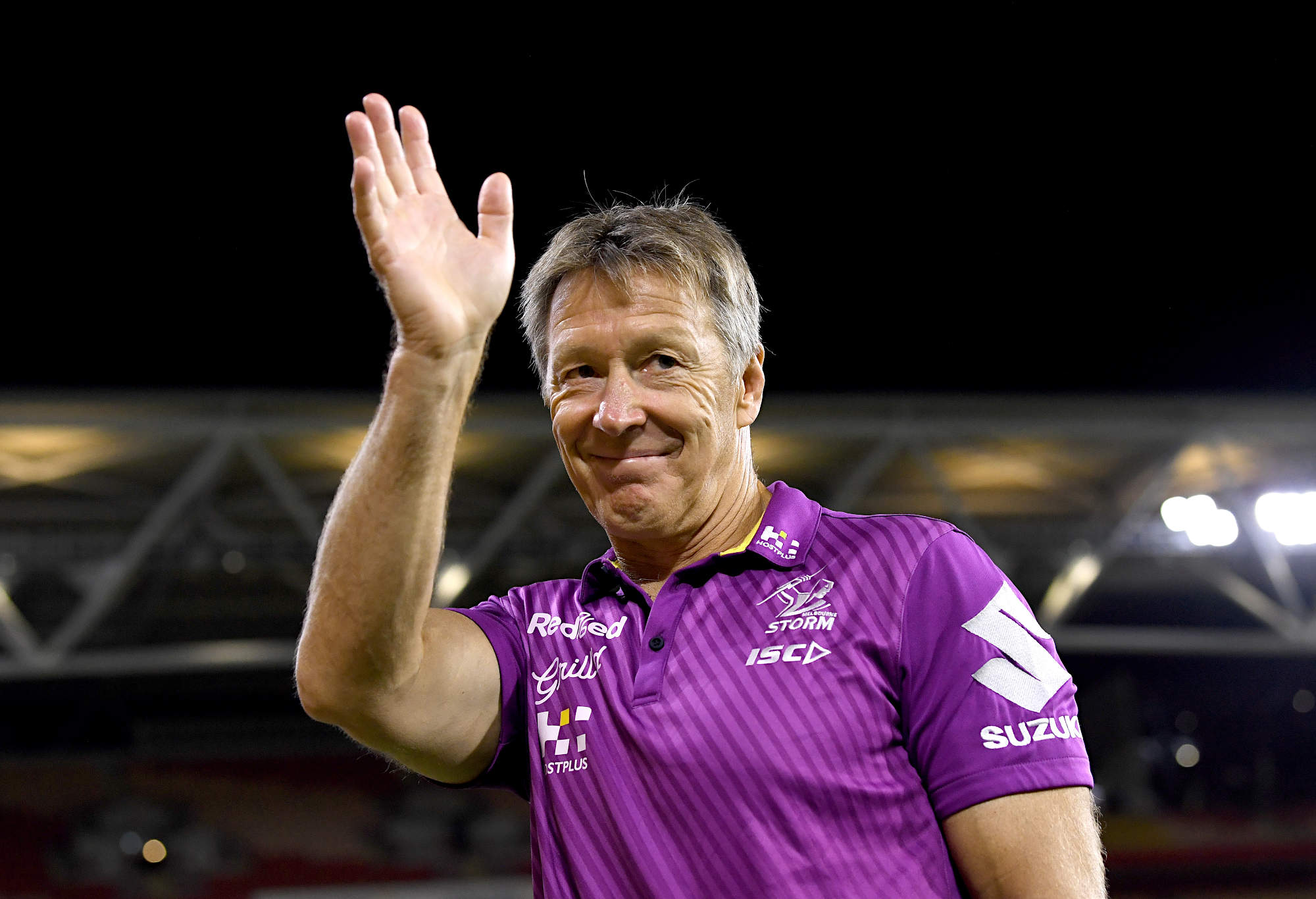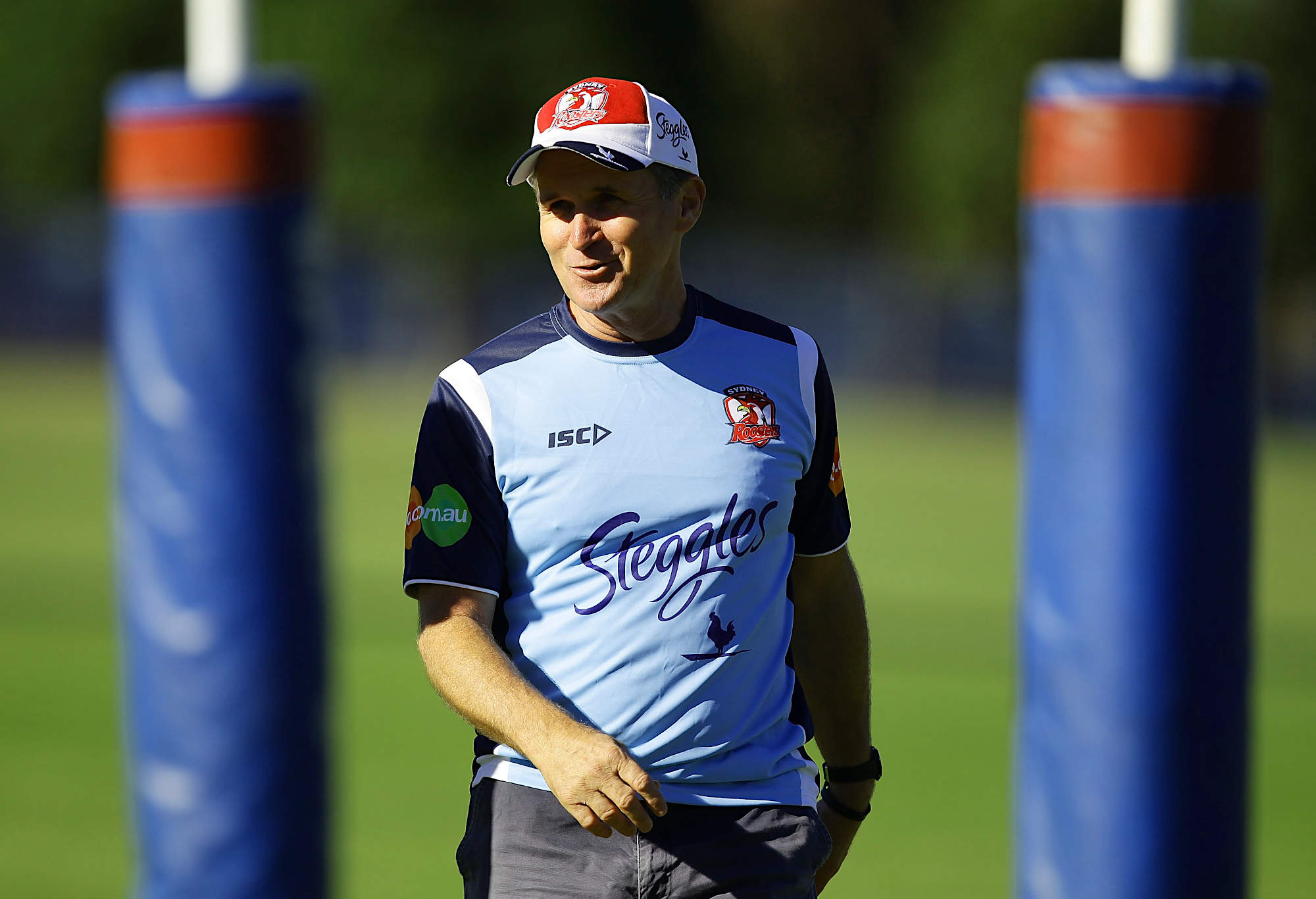Coaching in any sport goes through cycles. Everyone is fighting the last war, until someone else finds a new weapon, and then we all adapt again.
But what happens when the war fundamentally changes? What if you thought this was a boxing match, but the other guy suddenly knows what punches you’re going to throw?
That’s what we’ve seen in the last half-decade or so across the world of sports. Not just rugby league: all sports, everywhere.
There was a time, a simpler time for sure, when all you had to do was set yourselves up, maybe send someone to watch your opponents once, then give the boys a gee-up in the sheds and send them out onto the park.
That doesn’t exist anymore, in rugby league or anywhere else. Analytics has killed it. Young people have killed it.
Why would you send your team out to face an opponent you could have looked up, but chose not to? All the data on every team you’ll ever face is right there, at your fingertips, with curated video clips and detailed background information. You’d be crazy not to use it, right? Right?
What if shouting at people no longer made you look passionate, but out of control? Like you weren’t fired up, but not thinking straight? Would anyone take you seriously anymore?
What is a Proper Rugby League Man?
Rugby league has undergone two very, very significant shifts in a very, very short amount of time.
When Aiden Tolman, who has made the most appearances of any current NRL player, made his debut in 2008, he entered a league that barely knew social media, where few, if any clubs had data analysts, and where most of the playing group was, demographically speaking, much the same as it had been for the previous 100 years of rugby league in Australia.
In the 15 years between full-time professionalism and Tolman’s debut, not much had changed in the day to day operate of rugby league clubs. In the 15 years since, the game is near unrecognisable.
The coaching cohort from 2008 presents a good starting point to this discussion of what the trade is in 2022.
Of the current 16 NRL head coaches, four were in the league in that year: Ivan Cleary was at the Warriors, Ricky Stuart was at the Sharks and Des Hasler and Craig Bellamy were at the clubs they are at now (though Hasler left and came back).
Nathan Brown, recently departed from the Warriors, was then at the Dragons and Michael Maguire, spectacularly punted from the Tigers last week, was an assistant to Bellamy, a sort of first grade coach as he deputised when the Storm coach was wearing his NSW Blues hat.

(Photo by Bradley Kanaris/Getty Images)
In the interests of being a completist: Mick Potter, now at the Bulldogs, was a head coach in Super League with Catalans Dragons, while Brad Fittler, still in an elite coaching job with NSW, was at the Roosters.
It’s Brown and Maguire who are the key subjects of this article. They are, perhaps, among the last of the proper rugby league men. Anthony Griffin, still at the Dragons, might be the final one standing.
The ‘proper rugby league men’ refers to a phrase coined by soccer writers Alan Tyers and John Nicholson to describe the omnipresent pundits who talked about the game, but whose only qualification to talk about it was they had been good at playing it.
Dutifully, their opinions on the game, and particularly, who was good at coaching it, weren’t really based on anything other than who they were mates with rather than much a qualitative analysis of their skills.
The proper football man wasn’t interested in tactics, they liked someone who ‘knew the league’, ‘understood the game’ and ‘had an eye for a player’. Nothing you could judge them against, because analysis was something nerds did. All of this will seem familiar to anyone who has seen NRL 360.
In this sense, proper rugby league men is about ideas out of time, formed in a game that doesn’t exist anymore and which fades into the rear view mirror with every player who retires.
Ours is perhaps the last sport that holds onto them, because the way we talk about the sport has also largely not changed from 2008, or 1998, or 1988 for that matter. The mediums have changed, but the message has not.
To discuss why Brown and Maguire were so out of time, you have to think about the two central facets of being a coach – tactics and man management – and how those things have so drastically changed in the last 5-10 years.
Let’s take tactics first. This part refers back to the computers, because where once, you flew blind, now, you’ve have as detailed a map as you could wish for.
Your ability to coach is heavily informed by those around you, who you surround yourself with and the expertise that you choose to tap.
The impact of analytics into planning, reacting and dissecting events, across every level, is incalculable, and it simply wasn’t a thing until really very recently in the history of sport.
Simply having an analyst, or any assistant, but particularly one who trades in non-traditional methods is not enough. You have to listen to them. Be shaped by them. Fundamentally, you have to believe they can tell you something you don’t already know, and then be prepared to act on what they tell you.
Every club has analysts, but speaking kindly, not every coach knows how to use them. This was a central tenet of the ‘proper rugby league man’: a deep-seated belief that their methods had worked in the past and would work in the now. It wasn’t what you knew, but who you knew.
This rippled first through baseball, with the widely-heard of but frequently misread Moneyball, it then made it into more quantifiable sports like cricket, and then into less readily countable things like soccer and rugby league.
It’s probably at this point that I would mention if you don’t know anything about soccer, or don’t care about it, or don’t like it, then I apologise, because I will refer to it as a compare and contrast from now on. It’s hard not to.
Soccer is typically several years ahead of rugby league in this regard, because it is (if you’ll excuse the businessspeak) a more mature market.
More people play it, therefore there is more diversity of opinion, more comparables. Scottish football looks different to Dutch, to Spanish, to Argentinian, to Senegalese and so on.
Soccer in 2022 is predicated on the idea that, for want of a better phrase, the coach has an idea. Ralf Rangnick, one of the most progressive managers in the sport, described the role of a coach in sending the team out.
“They have in their brains the video of the perfect game,” he said. “The job of a manager is to transform this idea into the heads, hearts, brains and veins of your players. This is what I call motivation.
“Having a great speech before the game with the players has, in my opinion, nothing to do with motivation. That’s inspiration. Motivation is a transformation of my idea, but to do that, you have to be aware of the type of football that you want to play.”
Other sports have this too – notably basketball and ice hockey – but I don’t know enough about them to use as a reference point. If you do, I’m sure a lot of these points will seem highly transferable.

(Photo by Alex Grimm/Bongarts/Getty Images)
Is there such a thing as philosophy in rugby league?
The importance of this in evaluating coaches tactically comes down to their philosophy. Imagine a world where, in his first press conference as the new five-year-contracted coach of the Wests Tigers, a journalist asked Cameron Ciraldo what his philosophy was.
In fact, you probably don’t need to imagine it, because you know who Brian Smith is, and probably remember him as someone who never won anything.
But it’s impossible to imagine Erik ten Hag sitting down in his first Manchester United presser without someone asking that question. In fact, it’s hard to imagine an A-League coach not being asked.
I don’t know anything about basketball, but if you put ‘Steve Kerr coaching’ into Google, two of the top five suggestions are ‘philosophy’ and ‘style’, so I’m guessing it’s a thing there too. (Incidentally, “record” is number one, because some things never change.)
But we don’t talk about tactical philosophy in rugby league. Perhaps it’s our belief in the blood and guts nature of the sport, or simply because we think the question would be laughed at.

(Photo by Ezra Shaw/Getty Images)
If and when a new Tigers coach is named, I probably won’t ask the question because I’ll feel faintly ridiculous.
It’s certainly not because rugby league coaches don’t have philosophies: from Warren Ryan to Tim Sheens to Brian Smith to Shaun Wane, there’s plenty of guys who have had very specific ideas of how best to win a rugby league game and stuck to it across different jobs and different rosters.
A Brad Arthur team, for example, is based on the centrality of a big pack with second-phase play, with the salary cap focused on several players who can generate metres and offloads. That’s how he wants to play and developed a roster to fit it.
Even Trent Barrett, with his obsession with a ball-playing lock and playing through wingers in tackles one and two, had a philosophy, and you could even make the argument that he was too much of an ideologue in that he refused to change his philosophy to suit inferior players when he went from the Panthers system to the Bulldogs.
Maguire did have this, sort of, but his peaked in 2014 and never evolved. This is a key tenet of proper football manism: failure to adapt despite overwhelming evidence, especially if you achieved in the past. Don’t back down, double down.
It’s worth using a thought experiment to explain this. Once upon a time, I was a Cultural Studies student, and there was a little game you could play to judge whether a film had succeeded in creating a mood, or if a characterisation had been successful.
Describe the character without mentioning anything about what they look like. Who is Darth Vader? Who is Obi Wan Kenobi?
You can do this to sports: how does a Jurgen Klopp team play? What about Pep Guardiola? Who were the 2005 Wests Tigers, the 1985 Bulldogs, the late-2000s Melbourne Storm?
Now consider Nathan Brown. I’ve watched Brown since his days in Huddersfield and I could not begin to tell you how he thinks rugby league matches are won. There’s no such thing as Brownball.
It’s strange, really, because Brown was a Smith protege, but seems to have departed from the core tenets of Smithism by having no discernible mark on his teams.

Nathan Brown (Tony Feder/Getty Images)
Trent Robinson, another in the Smith coaching tree, has much more of the ‘promote the football’ ethos, as evidenced by winning two premierships while making the most errors. Tony Smith, the most obvious cognate, has perhaps the most identifiable style of any current coach anywhere in the world.
On the other side of the philosophical spectrum, there’s the arch-pragmatists, those who are consistent in culture and expectations off the field even when on it, they change regularly.
I think of this as a contrast between a signature style and a signature method. Shane Flanagan’s Cronulla had a style, Craig Bellamy has a method.
Bellamy’s core methodology has survived even when his playing style has gone from Wrestlemania to razzle dazzle.
That encapsulates the culture – sending new players to work on building sites when they join the Storm – to the instructions, such as giving very specific tasks and roles to most players, but extreme freedom to a select few others. It’s how he turns jobbers into superstars, a process some see as ‘next man up’ but is actually a triumph of pure coaching and strategy.
Wayne Bennett, too, is a master of this. Everyone knew what they had to do and when: especially in his later years, when Jason Demetriou wrote the music, but Bennett remained the conductor and got the musicians to perform.
There’s a reason why certain coaching trees – those who played under great coaches and then themselves became coaches – are so big.
The legacy of Tim Sheens and Brian Smith, two of the great ideologues of the past, and latterly Bellamy and Robinson, spread and spread.

(Photo by Bradley Kanaris/Getty Images)
There’s another aspect to this. Soccer coaches are now not coaches, they are managers, and not just in the nomenclature.
They don’t coach at all that much anymore: they manage a team of people that coach, but also oversee data teams that provide insights, consult on recruitment that is largely handled by someone else and, of course, deal with individuals in the team.
You can see this in the best NRL coaches. Robinson might have been a really good coach when he was younger in France, but now, he’s an overseer of Jason Ryles and Matt King, who sit above a coterie of other specialists.
If you don’t believe me, watch the Roosters warm up: there’ll be two blokes in shirt and slacks on the park, putting the players through their paces, but no Robbo.
Ivan Cleary is much the same. Again, if you don’t believe me, go listen to the pressers from when he missed matches due to his knee surgery.
Andrew Webster, who replaced him for one game, and Cameron Ciraldo, who stood in on another occasion, repeatedly said that they didn’t really change anything because all the work was already done.
Delegation, and being able to delegate confidently, is now among the most important skills. Smith foresaw this. He wrote a piece for this very site in 2015 that explained in depth the influence that analysts would have in the near future, and how good coaches would need to integrate them into their work.
Whatever you think of Maguire or Brown, it is hard to cast them as great delegators. I can’t imagine a world where someone with a laptop who never played a game of first grade changes Brown’s mind about anything.
The philosophy and the delegation go hand in hand: you have an overarching idea, recruit to it (both in players and staff), then trust your underlings to bring it to life.
When you look at this with Wests Tigers, it’s hard to see how they were set up to play. Jackson Hastings has 90 touches a game, but he’s only been there six months. What about last year or the year before? What’s the philosophy?
The medium and the message
The final aspect of the proper rugby league man comes down to the people you coach. As mentioned above, there are two facets to being a good coach: tactics and man management.
If you remember the Rangnick quote, he spoke about the difference between motivation and inspiration. Your plan, delivered over days, weeks, months and years on the training ground, and then what you say in the sheds to fire them up.
There was a time when information was limited and you trained twice a week that inspiration was the key element, because that’s where you could add value to the group. Now, it’s almost completely shifted.
The central aspect, however, is not the method but the delivery. Maguire is a noted disciplinarian, a giver of sprays. I can talk about how he goes about it because I know, because they stuck it on the telly last year, and because you can overhear sometimes before pressers. He gets stuck into his players.

(Photo by Mark Kolbe/Getty Images)
We saw Madge’s passion in the show, and he seemed to be commended for it, but to me, it struck me as dreadfully dated. It looked like methods that might have worked in 1992, 2002 or maybe 2012, but not in 2022.
The playing group has fundamentally changed. For one, the demographics are notably different and that has a huge effect.
There’s a theme in Patrick Skene’s outstanding book The Big O on the life and times of Olsen Filipaina, about ‘cultural competence’.
It was discussed when describing the differing methods of Frank Stanton, Balmain Tigers’ disciplinarian coach in the mid-80s, and Graham Lowe, Kiwis coach at the same time, in dealing with Olsen, the first Pasifika superstar in Australian rugby league.
It went something like this: when Stanton was unhappy, he would bollock Filipaina, who would stare at the ground, because it was in-built in him culturally to do so. Stanton would then bollock him again for not looking him in the eye.
Being shouted at certainly didn’t make him play any better. It didn’t fire him up like it might an Anglo-Celtic Australian. Coaches often appear like father-figures to their players, and in Polynesian culture, you never speak back to your father.
Maguire’s last Wests Tigers team featured ten Polynesian players – compare to his Souths 2014 Premiers, which had just four – but the communication appeared never to have changed. His stint with the Kiwis will be very interesting when it resumes for the World Cup.
In an era where the playing group is culturally used to something very different to what used to be the norm, cultural competence is a non-negotiable skill. Some invest heavily in it, and you’ll get no points for guessing who.
A few weeks ago, I attended a management conference on delivering the best outcomes when working with Pacific and Maori athletes. The Roosters sent three people, Parramatta sent two. Penrith sent people from the highest echelons of their coaching staff and from their junior pathways.
It isn’t just Polynesian players, though. Every generation thinks young people have gone soft, but with this generation, where mental health and workplace conduct are genuine hot button issues, the way that you conduct yourself in leadership positions has never been more relevant.
They also talk more than ever: every player knows every other player on social media, they share ideas in a private forum that the coach doesn’t get to see. It’s far more widespread than two blokes meeting in the back of a pub for a gossip. If you have a group of your players who think you’re a dick, every other team in the league will know about it.
It was put to me recently by a friend that, back in the 1980s and 1990s, players from opposing teams often hated each other, real Silvertails v Fibros stuff. Now, they form prayer circles after full time. They comment on each other’s posts on Instagram. They know it’s just a game.

(Photo by Matt King/Getty Images)
“As time goes on, generations change, their minds and mentality couldn’t handle me,” said Ricky Stuart, one of the 2008 club who remains in the game, to Andrew Webster of the Sydney Morning Herald in 2020.
“Now, I’m a relationship coach. I don’t mind if the player doesn’t like me, as long as he trusts me — that I care about him and do everything we can to win.”
“Wok (Warren Ryan) would last one review of a game with these blokes today. It’s not what you say to the player but how.”
Evolving the delivery method to suit your audience is something that Maguire seems never to have done. This, too, is a proper rugby league man trait.
The man management and the tactics now meet. Rugby league has, historically, been the most collectivist of sports: even now, the language of ‘full credit to the boys’ pervades.
But tactically, it is now possible to break apart collective strategies to individual instructions, because you can create an analytical plan, with videos and personalised messaging, for everyone.
In a salary-capped sport where your job is both to win collectively and to raise the individual values of the players for future trading, both of these angles need to be covered.
If your winger has a problem with defensive reads, you can give them five clips to suggest where they might do it better. When players reach first grade, they rarely need much skills coaching, because they’re already elite footy players. What they need is tailored instructions and detailed feedback.
Brown’s problem appeared to be delivering messages. I don’t know how he spoke to his players, but based on my experiences talking to him in the media, he was a remarkably unconcise speaker: you’d transcribe him and realise he’d said the same thing three ways.
Perhaps this was an affectation designed to waste the media’s time – if I knew I had to face the hacks for 10 minutes after a defeat, I’d go round the houses too – but if it was how he spoke all the time, it must have been difficult for the players to know what it was that they were actually meant to be doing.
In accepting the way that the game is in 2022, the way that all successful sports teams are now, is about using the available resources correctly, optimising your information and then being able to transmit that information in both a manner that your players can understand and in a way that makes them want to enact it.
In rugby league, we can read that as learning how to delegate and trust your backroom staff, to take on what they tell you and then make decisions based on it, and to then deliver those decisions succinctly to the playing group.
Maguire and Brown seemed incapable of this. They were men out of time. They were proper rugby league men.



































































































